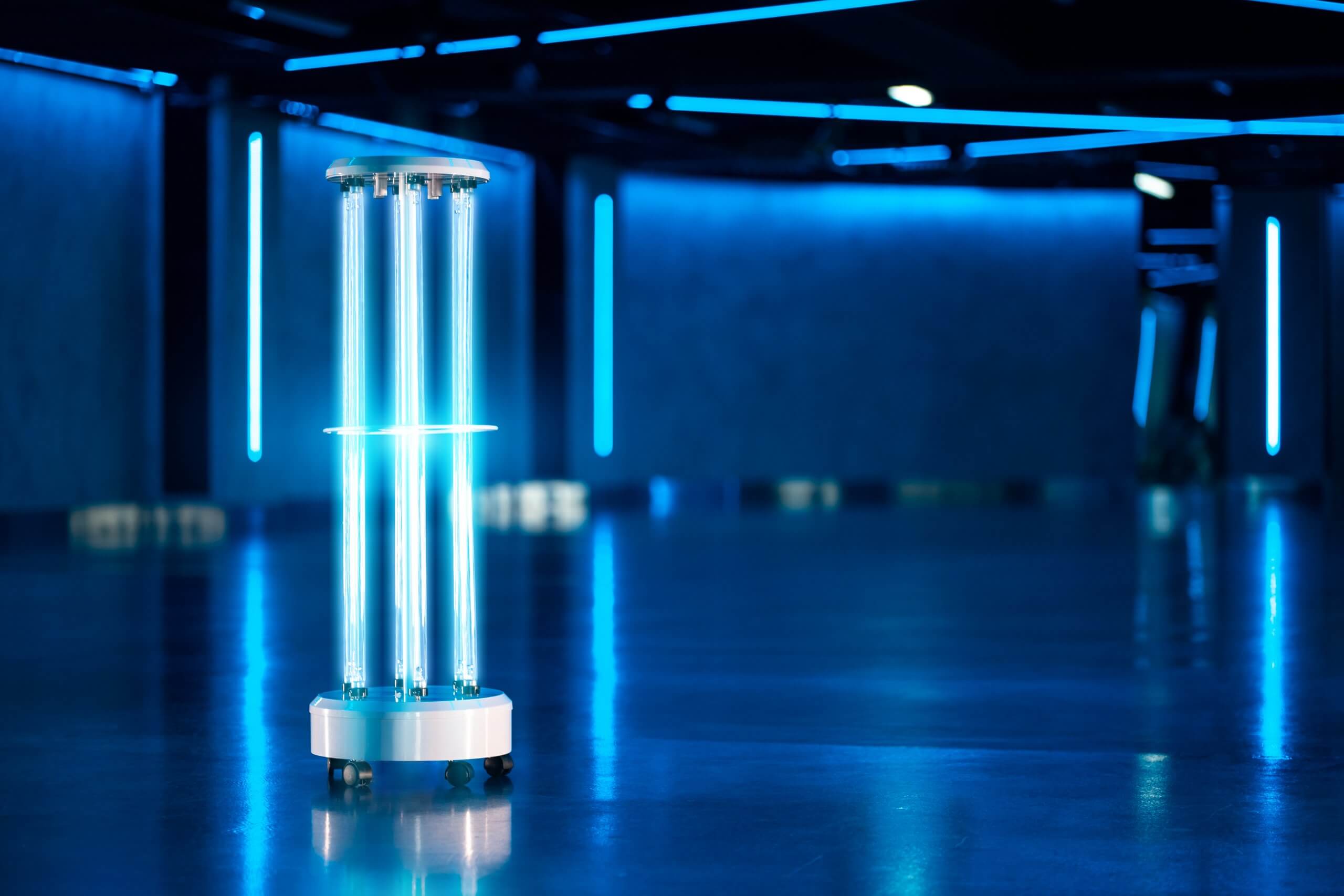When we think of ultraviolet light, we often think of sunburns and skin cancer. However, that’s not all ultraviolet light has to offer! Recently during the pandemic, the CDC recommended UVGI, or ultraviolet germicidal irradiation, as a disinfection tool for buildings and schools. But UV-C technology has been an advantage for indoor spaces for decades. Let’s take a look at the origins of ultraviolet light technology and how it’s useful in various fields.
What Is Ultraviolet Light?
Ultraviolet light, also known as ultraviolet radiation, is a form of electromagnetic radiation. The sun produces electromagnetic radiation at different wavelengths and frequencies. There are three types of ultraviolet light: ultraviolet-A (UV-A), ultraviolet-B (UV-B) and ultraviolet-C (UV-C).
UV-C has the shortest wavelength of the three, but it is the most powerful. In fact, UV-C light is germicidal by nature. This means that it deactivates the DNA of pathogens, preventing their ability to multiply and cause illness. This unique ability is what has led to a surge in UV-C technology.
How Does UV-C Technology Work?
Let’s discuss the two common ways UV-C technology is used to improve IAQ: germicidal lamps and UV air purifiers. While the devices function in a different way, they share the same goal: reduce pollutants and eradicate bacteria and viruses.
A UV-C lamp contains mercury and a noble gas. When plugged in, the electricity, mercury and noble gas react to artificially produce UV-C light. The lamp’s light eradicates pollutants like bacteria and viruses.
A UV air purifier simply includes a special bulb that emits UV-C light. The idea is that bacteria and viruses are exposed to UV-C light when passing through the purifier and destroyed. In whole-home air purification solutions, the air cleaning process happens as air passes through your home’s HVAC system and ductwork.
Does UV-C Technology Improve Air Quality?
Yes and no. In other words: yes, if used correctly. There is a lot in favor of ultraviolet light improving air quality. After all, bacteria and viruses are rendered ineffective when exposed to UV-C light. This reduces the chances of you and your family becoming ill and germs spreading indoors. This is particularly helpful during the cold and flu season each year. It’s also beneficial for individuals with compromised immune systems. Overall, UV-C technology seems like a clear winner.
However, these benefits are only possible with correct placement and installation of UV-C light. The challenge? Bacteria and viruses have to be under ultraviolet light long enough to inactivate.
![]() UV Lights for HVAC Systems: Ready to jump striaght into some more details on specific products we recommend? Check out our page dedicated to UV lights. We try to update it and add new information regularly. You can learn more here →
UV Lights for HVAC Systems: Ready to jump striaght into some more details on specific products we recommend? Check out our page dedicated to UV lights. We try to update it and add new information regularly. You can learn more here →
UV-C Air Purifiers
The drawback to UV air purifiers is that there is no guarantee pathogens will remain under the light long enough to deactivate. Therefore, an air purifier utilizing UV-C light sterilization should also utilize a second purification solution. For example, a portable purifier unit that also has HEPA level filtration or a whole-home system that uses both UV-C light and ionization processes. As a purification solution, it’s better to think of UV-C as a helpful add-on.
Also important to note: the bulb must be carefully contained inside the air purifier. Much like how UV-C light is harmful to humans, it’s incredibly powerful and can decay materials. If exposed to UV-C, plastic will deteriorate. As a result, it releases harmful chemicals into the air. In this scenario, ultraviolet light would cause more harm than good for indoor air quality.
Benefits of Upper Room UV-C AKA UVGI
In comparison, stick UV-C lamps offer a proven method of improving indoor air quality. Ultraviolet disinfection, ultraviolet germicidal energy or ultraviolet germicidal irritation efficiently inactivates microorganisms providing cleaner and healthier indoor air and surfaces.
Correct. That is why I have emphasized that UVC needs to be professionally designed and installed. Without the proper amount of UV light, you will do nothing to the mold, bacteria and viruses in the airstream except give them a suntan. https://t.co/uNg7l0sdW7
— Jim Rosenthal (@JimRosenthal4) May 27, 2021
Instead of attempting to purify indoor air that is moving quickly through ductwork, UV lamps instead focus on sterilizing HVAC equipment. In this scenario, UV-C technology is installed so that UV light shines directly on the HVAC system coils, drain pans and/or ductwork. These are critical HVAC system components. UV light prevents biological organisms and contaminants from growing on the coil. Preventing mold, mildew, fungi and other hazardous pollutants from growing and spreading is the true significance of UV-C technology.




